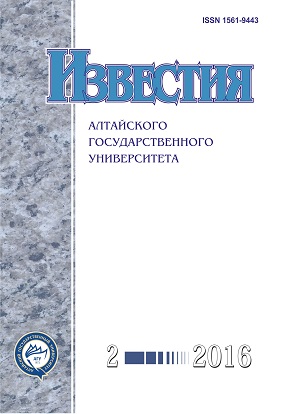The Badge of the Mining Engineer from the Burial at the Nagornoe Cemetery in Barnaul
Abstract
The article deals with the materials of one of the graves discovered during the emergency excavation of the monument at the Nagornoe Cemetery in the city of Barnaul in the autumn of 2015. The silver gilded badge of a mining engineer found in the tomb is of great interest for the restoration of the mining history in Altai and biographies of Mining Engineers. The sign is a faleristic rarity as the right to wear such badges belonged to the graduates of the only one in the Russian Empire Mining Institute in St. Petersburg. The employees of mining plants with higher education belonged to the upper class in the table of ranks and occupied fairly high positions. The analysis of the legislation of the Russian Empire, faleristic collections and sign’s manufacturing features allowed the authors to rank it among other academic signs introduced in the reign of Alexander II for military academies graduates according to the Law of May 14, 1866 № 43394. Thus, a badge allows defining extreme burial dates and is an important marker to determine the background and prospects of identification of a buried mining engineer.
DOI 10.14258/izvasu(2016)2-37
Downloads
Metrics
References
Алтайские горные офицеры XVIII-XIX вв. : сборник документов. - Барнаул. 2006.
Постникова-Лосева М.М. Указатель русских клейм на изделиях из драгоценных металлов XVII-XX вв. - М., 1992.
Стафеев К.Г. Вещественные свидетели истории горного дела и геологии в России (медали, нагрудные знаки, жетоны) / под ред. Б.А. Яцкевича. - М., 2000.
Именной Высочайший указ «О знаках отличия взамен аксельбантов для окончивших курс в военных Академиях» от 14 мая 1866 г. // ПСЗРИ. 2-е собр. - СПб., 1868. - Т. 41.
Высочайше утвержденные временные правила о преобразовании Корпуса Горных инженеров в гражданское ведомство от 22 апреля 1867 г. // ПСЗРИ. 2-е собр. - СПб., 1871. - Т. 42.
Именной Высочайший указ «О форме одежды для Горных Инженеров, переименованных в гражданские чины» от 1 июня 1867 г. // ПСЗРИ 2-е собр. - СПб., 1871. - Т. 42.
Баженова О.Е. Мундир горного офицера Колывано-Воскресенских заводов во второй половине XVIII - начале XX вв. // Этнография Алтая и сопредельных территорий. - Барнаул, 1998.
Мундирные пуговицы Российской Империи : каталог-справочник / сост. Б.Г. Кузин, А.А. Федорчук. - Евпатория, 2008.
Шепелев Л.Е. Титулы, мундиры и ордена Российской империи. - Л., 1991.
Шевелева Е.Н. Нагрудные знаки русской армии. - СПб., 1993.
Пережогин А.А. Чиновничество Алтая (17471871 гг.) : справочник личного состава. - Барнаул, 2012.
Соболева Т.Н., Осипова М.А. Алтайская бюрократия 60-х начала 80-х гг. XIX в. (негативные штрихи к портрету кабинетной горнозаводской администрации) // Население, управление, экономика, культурная жизнь Сибири XVII - начала XX вв. - Барнаул, 2003.
Izvestiya of Altai State University is a golden publisher, as we allow self-archiving, but most importantly we are fully transparent about your rights.
Authors may present and discuss their findings ahead of publication: at biological or scientific conferences, on preprint servers, in public databases, and in blogs, wikis, tweets, and other informal communication channels.
Izvestiya of Altai State University allows authors to deposit manuscripts (currently under review or those for intended submission to Izvestiya of Altai State University) in non-commercial, pre-print servers such as ArXiv.
Authors who publish with this journal agree to the following terms:
- Authors retain copyright and grant the journal right of first publication with the work simultaneously licensed under a Creative Commons Attribution License (CC BY 4.0) that allows others to share the work with an acknowledgement of the work's authorship and initial publication in this journal.
- Authors are able to enter into separate, additional contractual arrangements for the non-exclusive distribution of the journal's published version of the work (e.g., post it to an institutional repository or publish it in a book), with an acknowledgement of its initial publication in this journal.
- Authors are permitted and encouraged to post their work online (e.g., in institutional repositories or on their website) prior to and during the submission process, as it can lead to productive exchanges, as well as earlier and greater citation of published work (See The Effect of Open Access).








